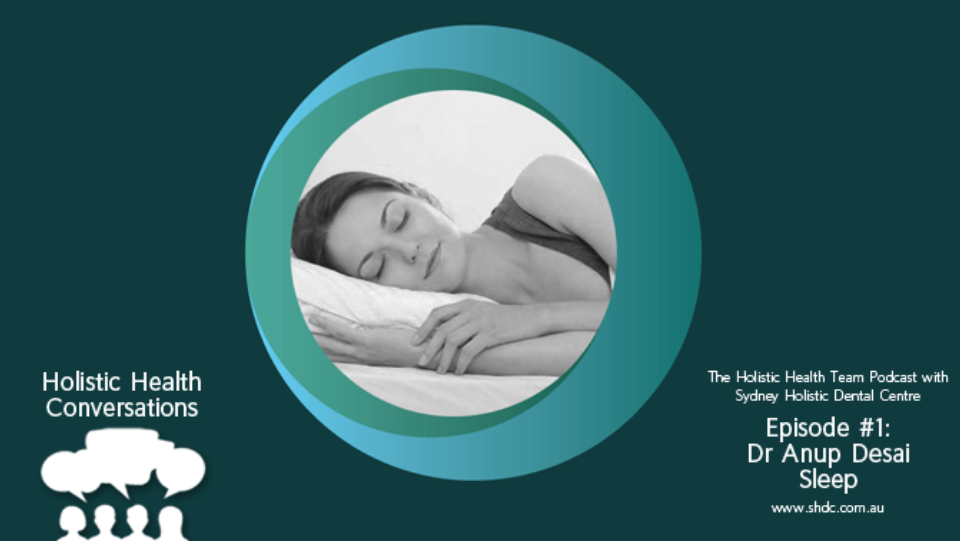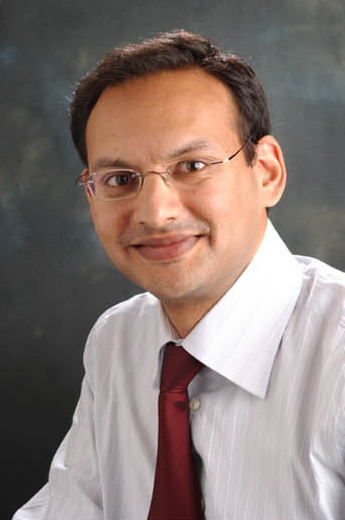Dr Anup Desai: Sleep, Sleep Disordered Breathing and Obstructive Sleep Apnea – #1
Dr Anup Desai: Sleep, Sleep Disordered Breathing and Obstructive Sleep Apnea – #1

Dr Anup Desai – MBBS (Syd) FRACP PhD Sleep Medicine (Syd)
Dr Anup Desai is a Specialist Sleep and Respiratory Physician. As well as his Specialist Sleep and Respiratory Physician qualifications, he has a PhD (Syd) in Sleep Medicine. He sees all Sleep and Respiratory conditions, and has a particular interest in non-respiratory sleep disorders, such as insomnia, parasomnias, restless legs, narcolepsy and unexplained sleepiness/tiredness.
He has extensive experience in issues related to obstructive sleep apnoea and driving and has helped to draft regulatory guidelines in this area. His focus is on a broad and realistic approach to each patient’s sleep disorder. For instance, when treating obstructive sleep apnoea, treatment advice will consider CPAP, dental splint management, ENT procedures, managing nasal disease, weight loss and possibly positional therapy.
Dr Desai has built up a strong multi-disciplinary team around him at Sydney Sleep Centre (including CPAP therapists, a Sleep specialised dentist, a Sleep Psychologist and Dietician) and has close relationships with other local experts, such as ENT surgeons.
Transcript of Episode
Q: Hello and welcome to SHDC‘s Holistic Health Conversations. Each week, we will showcase local and international practitioners who have an integrative, holistic approach to health and wellness. Join us as we explore how the wonders of modern medicine can be integrated with a preventative and holistic approach, helping you to take control of your health and be the best you can be. Our guest today is Dr. Anup Desai. Anup is a sleep specialist. He is somebody who we work with very closely at the Sydney Holistic Dental Centre. He incorporates a wide range of approaches to sleep disordered breathing conditions, in particular, obstructive sleep apnea. He’s got a PhD in sleep medicine, and we couldn’t think of anybody we would rather talk to about sleep problems. Welcome, Anup.
DR ANUP DESAI: Hello
Q: Anup, in our surgery, our focus is so much on sleep. I mean, we not only encourage our patients to brush and floss, but we say to our patients that we feel sleep is the most important part of the day, because if you’ve got it right, you have the physical, mental, and emotional energy to do everything you promise yourself you’ll do. But why is sleep so important?
ANUP DESAI: Well, sleep is obviously important for lots of reasons. Most people will know that if they don’t sleep, they’re going to feel tired the next day, irritable, excessively sleepy. But more subtle things might be poor attention, poor concentration, not doing tasks well, not being attentive in meetings, potentially poor driving and an increased risk of road accidents. So there are the obvious problems when people don’t sleep well. And keep in mind, poor sleep can also then increase people’s risk of depression, anxiety, it can add to relationship problems, so there is a whole lot of spin-off effects that are not directly related to people being tired or sleepy. Sleep itself, though, is important for hormone secretion. So some of our hormones are secreted, such as growth hormones, in sleep, and that is needed by the body to grow and to restore vital function. Memory consolidation happens in sleep, in certain stages of sleep. So there are certain, very critical body and hormone functions that rely on sleep to work. And then there’s this whole issue of sleep disorders. So if you’re sleeping poorly because you have a sleep disorder, for instance, something like obstructive sleep apnea, that can have other long-term health effects, such as increased risk of high blood pressure, heart attacks, strokes, affecting diabetes, affecting arrhythmia risk. There are a lot of different angles you can come at, in terms of poor sleep. There’s the obvious symptomatic day-to-day sleepiness, but then there’s how it affects more subtle things, how it affects relationships and mental health, and how it affects even things like driving. And if you consider this fact; if a person lives to the age of 80, they will have slept, or needed to sleep, for nearly 26 years, so it clearly is a very important part of our lives, so we need to get it right.
Q: And tell me, how common are sleep disorders?
ANUP DESAI: Sleep disorders are very common. They’re getting increasingly recognised, though still largely undiagnosed and unrecognised. There are many different types of sleep disorders, so one of the better-known ones is a breathing disorder called obstructive sleep apnea. That one affects 25% of middle-aged men, so there have been lots of studies that have looked at this. So if I just put middle-aged men in a sleep laboratory and do a sleep study and don’t ask them any questions, one in four will have some degree of sleep apnea. Now, not all of them are noticing obvious symptoms, but they are at health risks, for instance, risk of things like blood pressure, even if they report no symptoms. And obviously if they do report symptoms such as tiredness and sleepiness, then that’s impacting them on their day-to-day function. And even if you look at the most symptomatic group, the ones that say, ‘Look, I’m really sleepy,’ and then you do a sleep study, that’s still 4% of middle-aged men, and that’s similar to diabetes and asthma, which people know a lot more about. So that’s just a basic, simple statistic on one sleep disorder, which is obstructive sleep apnea. That condition’s also common in women, particularly post-menopausal women. But there’s a whole range of other sleep disorders. There are conditions like insomnia, where people actually have difficulty falling asleep, or they wake up in the middle of the night and can’t get back to sleep. I think most people have experienced that at various points in their life, acute insomnia, but chronic insomnia is something that lasts for several weeks or several months, and starts to become a bit of a habit, and that’s very common too; prevalence could be anywhere from 20% to 60%, depending on the age and the population group. So again, another huge sleep disorder that then impacts on how people function the next day. There are other sleep disorders; I won’t list them all, but restless leg syndrome, and there are other disorders of sleepiness.
Q: I mean, snoring is a common manifestation in people’s sleep; is that considered a sleep disorder?
ANUP DESAI: Snoring is a symptom of obstructive sleep apnea, at one level. That’s an important clue that someone might actually have obstructive sleep apnea. So what snoring is, snoring is due to narrowing of the airway, which then creates turbulent airflow and a vibration, hence the noise of snoring. Snoring in itself, if there’s no blocking of the airway from sleep apnea, is more of a noise issue. It isn’t really associated with any adverse health effects that we’re aware of; it’s more about disturbance to the partner or other people in the house. But if they actually block their airway as well, so they have sleep apnea, then that has all those flow on health effects that I mentioned before, in terms of sleep quality and daytime tiredness and sleepiness and blood pressure and heart attack risks. So snoring itself is more of a noise issue, but you have to exclude sleep apnea with a sleep study to be certain that your person is just a primary snorer, and that it’s a noise issue, rather than a snoring plus sleep apnea issue.
Q: And when we look at sleep studies, we use the term apnea, and I think it would be interesting for our listeners just to understand what that word means. And when you’re having a sleep study done – I know we look at various things – we look at what’s called the AHI index; is that the key indicator in a sleep study? Can you explain apnea, what it is in apnea, what the H is in the AHI index?
ANUP DESAI: Sure, so with a sleep study, we’re measuring lots of different aspects of the person’s sleep, including their sleep quality and all the stages of sleep they get, using brain electrodes. We’re looking at heart rate monitors to see the effects of poor sleep on heart rate and arrhythmias. We’re looking at their breathing, and we’re literally looking at every single breath, and we’re seeing whether that breath is normal or blocked or obstructed, and we look at breathing effort. So what happens with an apnea is the airway behind the tongue closes off in sleep. So normally the airway will relax a little bit in sleep as the muscles relax and will narrow a bit, but if it closes off completely, that’s abnormal; that creates what we call an apnea – so apnea means not breathing – and that, in turn, causes the brain to wake up or the oxygen level to fall. And that’s a discrete event that has all the flow-on effects, such as brain arousals, low oxygen levels, and long-term health effects. So that’s what an apnea is.
Q: And does that mean it actually– people stop breathing; if you stop breathing for 10– is it, what, 10 seconds? What is that period?
ANUP DESAI: Yeah, so before we call it an apnea, it’s at least 10 seconds. So for us to call an episode of no flow, blockage at the back of the throat an apnea, it has to have occurred for at least 10 seconds. There’s also a hypopnea, which is where the airway closes off markedly, but not absolutely completely, but it still has the same adverse effects, so the oxygen level falls or the brain wakes up. So we call them hypopneas, so reduced flow which has the same sort of physiological effect. And the number of apneas and the number of hypopneas that occur per hour of sleep is what we call the apnea-hypopnea index. So the apnea-hypopnea index is really just a numerical count of the events, divided by the amount of sleep we see, based on the EEG profile, so that’s a good indicator of the severity of the sleep apnea condition because it really describes the frequency of the events.
Q: Anup, I sent you a patient, because I know we work together and often if we’re referring to sleep specialists, you are who we’re working with, and I had a patient come back with an AHI index. I couldn’t believe it; is it possible to have a 58?
ANUP DESAI: 58? Yeah, that’s absolutely possible, yeah. I’d probably see one or two of them a week. So that’s what we’d call severe sleep apnea; anything more than 30 an hour is severe. So at 58 apnea-hypopnea index per hour, what that means is that person is blocking their airway 58 times an hour, so basically once a minute. And remember, they’re blocking for at least 10 seconds before we even call it an apnea or hypopnea. And realistically it’s at least– it’s sort of often around 20 seconds or so. So you can quite comfortably interpret that that person’s not breathing for about a third of the night.
Q: Wow. I mean, that’s just– I was going to say, there are only 60 minutes in the hour, and here she had a 58 score. What is the longest you’ve recorded somebody having a hypopnea? I mean, how long can people hold their breath for at night?
ANUP DESAI: I mean, I’ve seen apnea-hypopnea index values of 120, 150, I think I saw an 180, in terms of frequency. In terms of duration, it can be quite long, actually; it can easily be a minute, it could be as much as two minutes, and you can see the oxygen level plummet. I’ve seen oxygen levels go down to the 20% mark. Now, in some cases, they have other cardiac or respiratory disease that means that their ability to keep their oxygen level at a more normal level is impaired, so they might drop further because as soon as they get a sleep apnea event, so there may be other conditions playing in there. But all that, of course, puts a major strain on the heart; it increases your chance of heart attacks and strokes and affects things like blood pressure. And there’s even some evidence that people with severe sleep apnea have a higher mortality, and it’s not sure how that occurs, but a lot of people postulate that it could happen in sleep. Because a lot of heart attacks often occur in the late morning when people are asleep, and some people postulate that maybe they’re having their sleep apnea at that point, and hence they’re having an arrhythmia or heart attack related to that.
Q: It’s quite extraordinary to think, well, okay, the minimum a stoppage or interruption of breath or restriction is 10 seconds, the average is 20 to 30 seconds, but it can get up to 1 to 2 minutes.
ANUP DESAI: Absolutely.
Q: That’s just mind-boggling.
ANUP DESAI: Yeah, so there’s clearly a greater tolerance of not breathing in sleep than awake, but it still has a lot of physiological affect.
Q: So if they had that AHI index of less than 5, it would be considered normal.
ANUP DESAI: Yeah, we regard that as normal, and generally if those people are snoring, we would call them simple snorers.
Q: And if it was– what is the mild and moderate stage? What are the ranges of apnea-hypopnea?
ANUP DESAI: So mild sleep apnea is 5 to 15 apnea-hypopnea index per hour, and moderate’s 15 to 30, and severe’s more than 30.
Q: Wow, it’s just incredible, isn’t it? And you mentioned these symptoms of depression and anxiety, and it often surprises me when we take a medical history, the number of people that are on antidepressants, and yet, when I question them, they’ve never had their sleep considered as an issue. I mean, it must be a huge undiagnosed problem.
ANUP DESAI: Yeah, there’s a big overlap there, I think, between depression and sleep apnea. On the one hand, a lot of the symptoms of depression could even be simply due to the sleep apnea. So, you know, people with depression report low energy, low mood, fatigue, sleepiness, on one hand, and all those symptoms could be explained by sleep apnea. Some of the more negative though effects that people have with depression, like suicidal ideation and very depressed mood, then that isn’t so well explained by sleep apnea, but I do wonder sometimes whether people have been put on antidepressants or diagnosed with depression when in fact, their problem is poor sleep, in the form of things like sleep apnea. But in addition, if a person does have depression, having untreated sleep apnea would add to their symptoms because it would obviously affect their mood and tiredness and sleepiness more. And there is some evidence that it could affect their response to antidepressant therapy as well. So there are a few different ways sleep apnea can sort of affect the diagnosis or the management of people with depression.
Q: And what predisposes people to these sleep issues, this obstructive sleep apnea?
ANUP DESAI: So obstructive sleep apnea really has two to three main broad risk factors; obesity is one of them. Generally a lot of people are overweight or obese, and that’s particularly the case, for instance, in middle-aged men or middle-aged women. But there’s also an influence of menopause for women. So post-menopause, women are much more likely to get sleep apnea. And then the other thing to consider is not obesity, but it’s the way jaws and airways develop with time with adults. So there’s an increasingly recognised group of obstructive sleep apnea patients that have it not because they’ve overweight, but because they’ve got a narrow airway, due to their lower jaw sitting back or being small, or the back of their airway developing in a more crowded way. So it’s intrinsically narrow, due to boney or skeletal factors, and then when they go to sleep, it just closes off completely. So that’s one of the things dentists, I’m sure, are seeing all the time; they’re seeing narrow airways, they may see that the patient’s obese, or they may just see that the person’s got a receding lower jaw, and they think, ‘Well, if it’s narrow now, when they’re awake, when they go to sleep and it relaxes, it’s likely to block off.’ So there’s this group of bony skeletal factors that can contribute to sleep apnea, there’s obesity, there’s post-menopausal status. It does tend to be more common in men, as a general rule. And there are a few medical conditions that can contribute to it, such as hypothyroidism or growth hormone disorders, but they’re pretty uncommon.
Q: Right. Now, it may be a function of my age, but to me, middle-aged means somebody in their late 50s, early 60s, but that’s not really what middle-age is, is it?
ANUP DESAI: Well, middle-age can be whatever you want it to be [laughs].
Q: But what is it medically?
ANUP DESAI: From the studies’ point of view, when they talk about middle-age, they’re generally talking about 40 to 60, 40 to 65. So a lot of my patients actually are, I would say, men, 40 to 55, that firstly the partner’s commenting on the snoring or the tiredness or sleepiness, or they’re concerned about work performance in some of field; they can’t get promoted, they’re held back by their lack of alertness during the day. So that wouldn’t be an uncommon group at all that presents, and then we diagnose sleep apnea and we go from there.
Q: Now, I know that you’ve done a lot of research on the effect of sleepiness on road accidents. That’s an issue too, isn’t it?
ANUP DESAI: Absolutely. So untreated sleep apnea increases the driver’s risk of falling asleep at the wheel, and hence an accident, due to that mechanism. And it’s actually not that uncommon; driver fatigue’s quite a big issue. And it is quite important, from a driving perspective, that people are assessed and treated. And of course, the responsibility for the driver, it not just relates to themselves driving safely, but it also relates to the other people on the road. So there is this medicolegal risk, if you like, where people are diagnosed with sleep apnea or have obvious sleep apnea symptoms, and they’re not being managed, and if they fell asleep and hurt someone on the road, that other person might come back to them and say, ‘Well, you’re not managing your sleep condition. It was obvious that you had it or you knew about it; you didn’t do anything about it, and here I am, injured and let’s talk about that.’ So there is this medicolegal side. And not infrequently at all, I’m called to do reports, medicolegal reports on a person that’s actually fallen asleep at the wheel and killed someone, and that person was either known to have sleep apnea or was subsequently diagnosed with sleep apnea after the accident, and it just raises a lot of questions about the culpability of the driver, to be honest. And obviously they’re complex legal questions, and it doesn’t necessarily mean that someone’s always going to get into trouble, but you can see that there are questions asked about, ‘Well, should this person have been treated? Why wasn’t he being treated? Who was following him or her? Could that accident have been preventable?’
RQ: Yeah, and it also surprises me sometimes how the stereotypical model of the obese, middle-aged man or pre-menopausal woman is not always– I mean, it can affect younger people who are not overweight as well, can’t it?
ANUP DESAI: Absolutely. So that’s that more jaw skeletal issue, and it’s most common in South-East Asians, in particular, so Japanese, Chinese. And it’s not uncommon to get a young man like that with a receded lower jaw, with severe sleep apnea. And that can present a challenge to treatments, because they aren’t always volunteering a lot of symptoms, such as tiredness or sleepiness, or they’ve learnt to deal with it, or they know no different. And usually in severe, we would recommend a treatment with a CPAP machine – it’s a machine beside the bed that blows air through a mask – and there’s clear resistance, obviously, at times, particularly with the younger group, to use a treatment like that. So absolutely, lots of young people are getting diagnosed with this condition, and then the challenge, of course, is how to treat them.
Q: Which leads me to my last question, which really was some of the treatments? You’ve mentioned CPAP.
ANUP DESAI: So CPAP is a machine by the side of the bed, blowing air through a mask, and the person sleeps with the mask on their face. We generally use it for moderate to severe sleep apnea. It is a very effective treatment, providing the person can and will wear it, and it’s not always easy for any individual person to wear it. Some people get a dramatic effect and absolutely love the machine and the effects it causes them in alertness and energy; others can’t manage it and don’t like it at all and won’t use it. And there’s a group in between that will use it because they know all the health benefits they’re getting, in terms of symptoms and less chance of heart attacks and strokes, but don’t actually love the therapy. So CPAP’s a common treatment for more the moderate to severe end though it will treat any level of severity, including mild. For the mild end of the spectrum, we often talk about things like mouth splints, so these are dental devices that can be fitted by dentists like yourself, Ron, that move the lower jaw forward and attempt to open up the space behind the tongue, so they move the jaw and the tongue forward and keep the airway open through that mechanism. There are some surgical procedures that are done in the nose and the back of the throat, so the soft palate area or even the base of the tongue. Again, more effective for the mild end of the spectrum, or the primary snorers, or as an adjunct; for instance, if you’ve got a mouth splint in and you’ve got a blocked nose, that’s going to be hard to manage, so you may need some surgery to your nose to unblock the nasal airway. And then, of course, there’s always the role of weight loss in those people that are overweight, to reduce the severity of snoring and sleep apnea. And then finally there’s some very aggressive surgical approaches that involve breaking the jaw and moving the jaw forward and trying to overcome some of the inherent structural bony abnormalities that are causing narrowed airways that generally people won’t go for unless they’ve tried other approaches and there’s been a fair bit of discussion about the merits of that kind of surgery. This is for adults, I should say; I don’t treat kids.
Q: Wow. Well, Anup, thank you so much for today. You’ve given us a great overview of this issue. I know we work a lot more together, and we’ve been working together a lot over the last few years. And we’re actually going to have a link to your clinics, which are very close to ours. So thank you so much for joining us today. It’s been terrific.
Questions for the podcast?
Leave your questions and responses in the comments section below. You can also ask your questions and engage with other listeners through the Sydney Holistic Dental Centre Facebook page!



